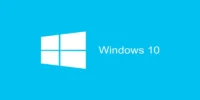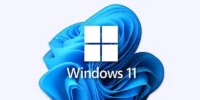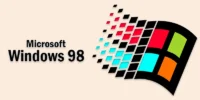Repair Windows Screen | Fix Flickering and Black Screen
Published: 9 Jul 2025
Repair Windows Screen
Did you know that one of the most frequent difficulties that Windows users have each year is screen issues? Are you wondering why your screen stops, flickers, or goes dark all of a sudden? You’re not the only user who encounters these bothersome problems, particularly if they depend on their computer for their job or education. From display driver glitches to cracked screens, the reasons can vary. Let’s break it all down in simple steps and help you fix your Windows screen fast!
Understanding the Problem
Sometimes, your Windows screen stops working the way it should. Maybe it’s flickering, going completely black, or showing weird colors. Before you try to fix it, you need to know what’s causing the problem.
What Is a Windows Screen Problem?
Here are some common screen problems people face:
- Black screen – Your computer is on, but the screen stays dark.
- Flickering screen – The screen flashes quickly and won’t stay stable.
- Frozen display – The screen gets stuck and doesn’t move.
- No signal – On desktops, this means the monitor can’t connect to the computer.
- Cracked or damaged screen – This is physical damage, usually from a drop.
These problems can be scary, but most have simple solutions.
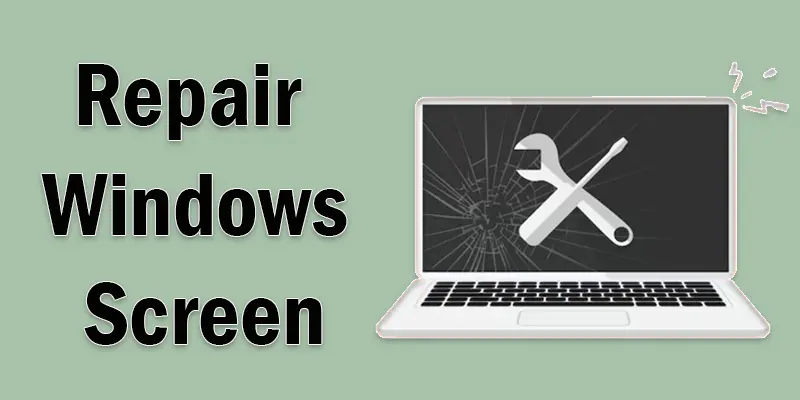
Software vs. Hardware Issues
It’s important to know where the problem comes from:
Software Issues
These are problems inside your system. They include:
- Outdated or broken display drivers
- Wrong screen settings
- A recent Windows update caused trouble
Example: You install a new driver, and the screen starts flickering. That’s a software issue.
Hardware Issues
These are physical problems with the screen or cables. They include:
- A cracked laptop screen
- A loose HDMI cable
- A damaged graphics card
Example: You drop your laptop, and the screen shows lines. That’s a hardware issue.
Fixing Software-Related Screen Problems
Most screen issues happen because of software problems. The good news? These are usually easy to fix at home. Let’s walk through the simple steps.
Restart Your PC (The Classic Fix)
Sometimes, your screen just needs a fresh start.
Steps
- Hold the Power button for a few seconds.
- Wait for the computer to shut down.
- Turn it back on.
- Tip: This helps fix small errors in the system that cause screen glitches.
Update or Roll Back Display Drivers
Your screen depends on something called a display driver. If it’s outdated or buggy, the screen may act weird.
To update your driver
- Choose Device Manager by doing a right-click on Start.
- Select “Display adapters.
- Right-click on your graphics card and choose Upgrade to upgrade the driver.
- For updates, click “Search automatically.
To roll back (if the problem started after an update)
- Follow the same steps above.
- Select Roll Back Driver from the Driver tab after clicking Properties.
- Example: After updating Windows, your screen flickers. Rolling back the driver might help.
Use Safe Mode to Troubleshoot
Safe Mode runs only the basics—no extra stuff. This helps you find out if another program is causing the issue.
How to switch to safe mode
- From the Start menu, select Restart while holding Shift.
- Navigate to Startup Settings > Advanced Options > Troubleshoot > Restart.
- To enter Safe Mode, press F4 or 4.
What to check in Safe Mode
- Does the screen work fine?
- If yes, the issue might be caused by an app or a new driver.
- Real-life Example: A user installs a new game. The screen goes black. In Safe Mode, it works fine. That means the game caused the issue.
Adjust Display Settings
Wrong screen settings can cause flickering or a stretched display.
Steps
- Go to Settings > System > Display.
- Check screen resolution. Set it to Recommended.
- Under Advanced display, check the refresh rate (60Hz is common).
- Tip: If you’re using two monitors, make sure you’re on the right display mode (Duplicate, Extend, or Second screen only).
Check for Windows Updates
Windows updates enhance system efficiency and address issues.
Steps
- Select Windows Update under Settings.
- Click “Check for updates.
- Restart your computer after installing any pending updates.
- Tip: Always update your system regularly to avoid random screen issues.
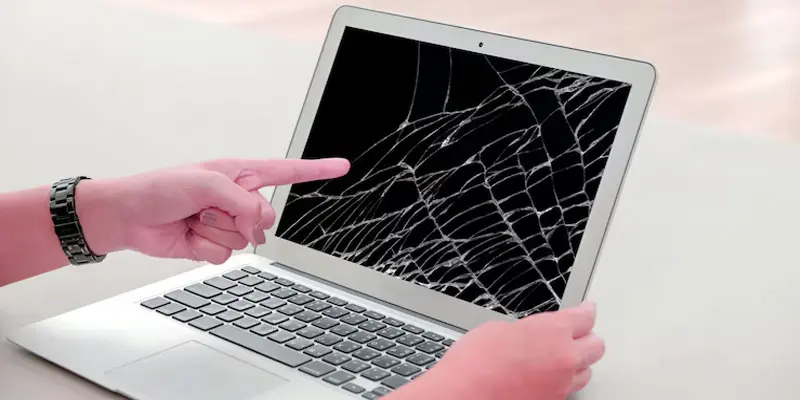
Fixing Hardware-Related Screen Problems
If software fixes didn’t help, the problem might be with the hardware. That means there could be something wrong with your screen, cables, or computer parts. Let’s look at what you can do.
Check Cable Connections (For Desktops)
Sometimes, the screen doesn’t work because a cable is loose or broken.
Steps
- Turn off your PC and monitor.
- Unplug and plug in the screen cable again (HDMI, VGA, or DisplayPort).
- Make sure both ends are secure and tight.
- Turn everything back on.
- Tip: If you have another cable, try it.
- Example: Your screen says “No Signal.” A loose HDMI cable might be the problem.
Test with an External Monitor (For Laptops)
If your laptop screen is black or cracked, test it with an external monitor.
Steps
- Plug your laptop into a monitor or TV using an HDMI or VGA cable.
- Press Windows + P and choose Duplicate or Second screen only.
- If the monitor works, your laptop screen is the issue.
- Tip: This trick helps you find out if it’s a screen problem or a deeper issue.
Look for Signs of Screen Damage
Check your screen closely. Do you see cracks, lines, or black spots?
If yes, this could be physical damage.
- Cracks: The screen needs to be replaced.
- Lines or black spots: Usually caused by pressure or a fall.
- Example: If your laptop dropped from a table and now shows weird lines, the screen likely broke.
Replace a Broken Screen
If your screen is damaged or dead, replacing it might be the only option.
You can
- Call a local repair shop
- Visit an authorized service center
- Replace the screen yourself (only if you’re confident)
- Tip: Always check your warranty. You might get a free or discounted repair.
Check the Graphics Card (For Desktops)
A faulty graphics card can also cause display problems.
Signs of a bad graphics card:
- No display
- Strange colors or shapes on the screen
- System crashes often
What to do:
- Open the PC case (if you’re comfortable)
- Reseat the graphics card (take it out and put it back in)
- Try another card if available
- Note: If you’re not sure, it’s best to ask a technician for help.
- Extra Tip: Keep your laptop or PC in a safe place. Avoid dropping it or placing heavy things on it.
Extra Tips to Keep Your Screen Working
Taking care of your screen helps you avoid future problems. Here are some simple tips to keep it in good shape.
Clean Your Screen Gently
Use a soft, dry cloth to clean your screen. Don’t spray water or cleaner directly on it. Wipe gently to avoid scratching or damaging the screen.
Don’t Install Unknown Software
Don’t install software from websites you don’t trust. Some programs can cause problems with your screen or computer. Always use safe and known sources like the Microsoft Store.
Use a Surge Protector
A surge protector keeps your computer safe from sudden power spikes. It helps stop damage to your screen and other parts. Always plug your PC or charger into one outlet instead of the wall.
Be Gentle with Your Laptop
Laptop screens are delicate. Don’t press the screen, slam the lid, or throw it in your bag. Handle it with care to avoid damage.
Restart Often and Update Regularly
Restarting your computer clears small problems and keeps it running smoothly. Updating helps fix bugs and adds new features. Do both to keep your screen working well.
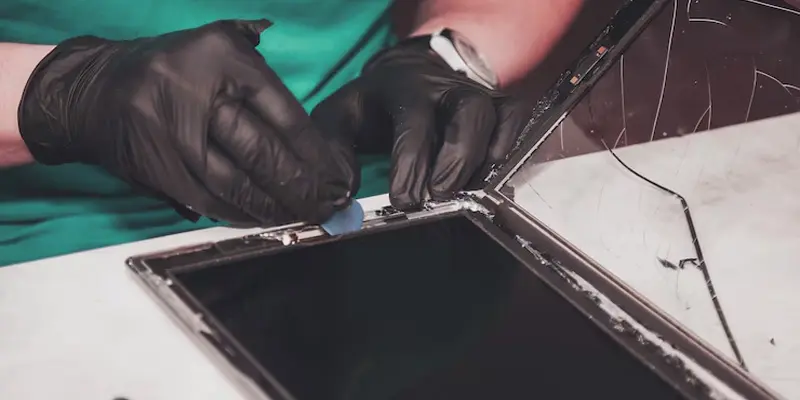
Conclusion Windows Screen Repair
We’ve covered repairing the Windows screen in detail. From simple software fixes to checking hardware, these steps can save you time and money. I personally recommend starting with easy solutions like restarting and updating drivers before calling a technician. Remember, most screen problems have simple answers if you stay calm and follow the right steps. If you found this helpful, try the tips yourself and share your experience or questions below!
FAQs Repairing Screen Windows
Windows screens usually last many years, but if they crack or don’t work properly, it’s time to replace them. Most people replace screens only when damaged or very old. Regular care can make your screen last longer.
Lowe’s offers window screen repair services in some stores, but it depends on your location. It’s best to call your local Lowe’s to check if they can fix screens. They can also sell replacement screens if you want to fix it yourself.
Fixing a window screen usually costs between $10 and $50, depending on the damage and size. Replacing the whole screen is more expensive than patching small holes. Prices vary by location and repair shop.
To reach the repair screen, restart your PC and press Shift + Restart from the Start menu. This opens the recovery options, where you can choose Troubleshoot and then Advanced options. From there, you can fix startup problems or reset Windows.
Pressing F12 during startup opens the boot menu where you choose the device to start from, like a USB or DVD. It helps when you want to reinstall Windows or run recovery tools. Not all computers use F12; some use other keys like F8 or Esc.
Alt + F12 usually doesn’t do anything special in Windows 10. Some programs might use it as a shortcut, but Windows itself has no default action for this key combo. If you want to know about a specific app, check that app’s shortcuts.

- Be Respectful
- Stay Relevant
- Stay Positive
- True Feedback
- Encourage Discussion
- Avoid Spamming
- No Fake News
- Don't Copy-Paste
- No Personal Attacks

- Be Respectful
- Stay Relevant
- Stay Positive
- True Feedback
- Encourage Discussion
- Avoid Spamming
- No Fake News
- Don't Copy-Paste
- No Personal Attacks


